I’m always willing to try shortcuts once.
My Mom makes shiratama zenzai from scratch (see Homemade Zenzai recipe here) and will use store-bought fresh made mochi as a short-cut, but she’ll never use canned ogura-an and Mochiko (for instant mochi, although I believe there is also shiratamako which I have not yet come across) to make shiratama zenzai. Although Mom always knows best, I had to see for myself whether I could get away with some major shortcuts and still end up with pleasing results.
Shiratama zenzai is a sweet red bean soup with mochi. There are variations of this traditional Japanese dessert where the mochi is grilled to perfection (crisp on the outside with grill marks and puffy and soft on the inside), boiled, or slightly cooked in the microwave or toaster oven. As a child, I never liked zenzai, but things change.
In my youth, traditional Japanese desserts were never a favorite of mine. By traditional desserts, I’m referring to wagashi: manju, dorayaki, taiyaki, yokan, mochi, and anything with anko.
In my youth, I hated anko or red bean paste. I preferred Japanese sweets such as kakigori (shaved ice), parfaits, or orange ice and vanilla cream cups, and packaged snacks such as Pocky Sticks, Koala-no-March, Yan-Yan. Higher-end Japanese cookies, specifically Yoku-Moku (my all-time favorite) and Gauffers are still my favorite and have a special place in my heart. My relatives in Japan still send these on special occasions or bear these as gifts when visiting us here, but whenever I am in Japan I stock up. (These cookies are also available at Mitsuwa but they are quite pricey if purchased here in the states.)
While anko is still not my choice of Japanese dessert, for example I prefer homemade kinako ohagi with no anko versus the traditional ohagi wrapped in anko, I’ve found a new love for zenzai. I think this largely came to be because of the many Chinese restaurant dinners I’ve enjoyed with my in-laws and the wonderful red bean soup that is always served at the end of our meals. At first, I often declined the red bean soup dessert, but soon I found myself taking two to three bites, and now, I always finish the entire bowl and would happily accept seconds.
My newfound love of Chinese red bean soup reminded me of a dessert that I remembered my Mom used to make for her and her friends when I was young, zenzai. Of course, at the time I had absolutely no interest in anything with red beans and largely ignored this dessert in our home, but not too long ago I decided I wanted to try making this myself. This was largely inspired by the fact that I found a can of ogura-an on sale at Marukai.
After tasting this instant version of my Mom’s zenzai, I must say that the canned ogura-an doesn’t do justice to shiratama zenzai but it’s not bad. I made this for my parents and both enjoyed it and agreed that it wasn’t a bad alternative to homemade zenzai but the latter is definitely better. I should also mention that the canned ogura-an was a bit too sweet for my liking. However, the shiratama was very satisfactory and I appreciated the soft pillowiness of this mochi.
So why share this instant recipe if I feel the homemade version is much better, you ask? It was a good trial and it’s not bad for a quick dessert and it won’t disappoint. Next time, I will share with you my Mom’s homemade zenzai. I have yet to try making this myself but my mom professes it’s ease. It just takes time and patience for the beans to cook.
INSTANT Shiratama Zenzai
for shiratama (mini mochi pillows), makes approximately 15
- 3/4 cup shiratama-ko or Mochiko (glutinous rice flour)
- Slightly less than 1/2 cup water (add to Mochiko)
- 3 – 4 cups water for boiling
for instant zenzai
- 1 can (18 oz) Morinaga Ogura-an Sweetened Mashed Red Bean
- 3/4 to 1 cup water, adjust water to achieve the thickness you prefer
- Pinch of salt
1) In a small bowl, combine Mochiko flour and water. Gently mix with chopsticks until incorporated. Next, gently knead dough with fingertips until the dough is soft and pliable.
2) Bring water to boil in a medium pot. Meanwhile, scoop approximately 1/2 tablespoon heaps of mochi dough and gently shape them into balls.
NOTE: The dough will be very soft, but it should mold into balls. If the dough is sticking to the palms of your hands and will not keep it’s shape, add more Mochiko flour.
This is a picture of a particularly large shiratama on my very dry palm. This must have been towards the end of the batch.
3) Drop mochi balls into boiling water and cook for about 3 to 4 minutes. At first, the mochi will sink to the bottom of the pot, but when they are cooked they will float to the top of the water.


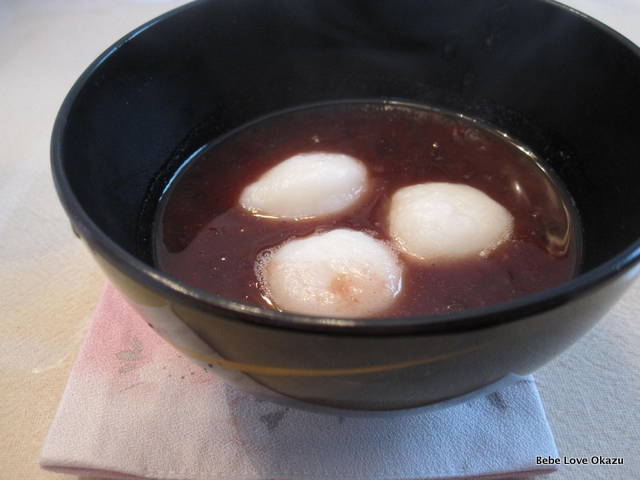
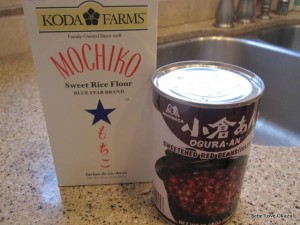
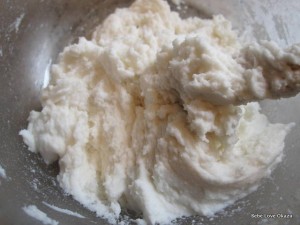
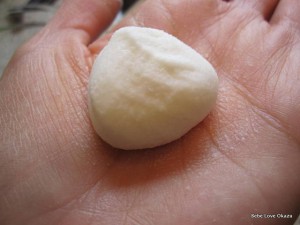

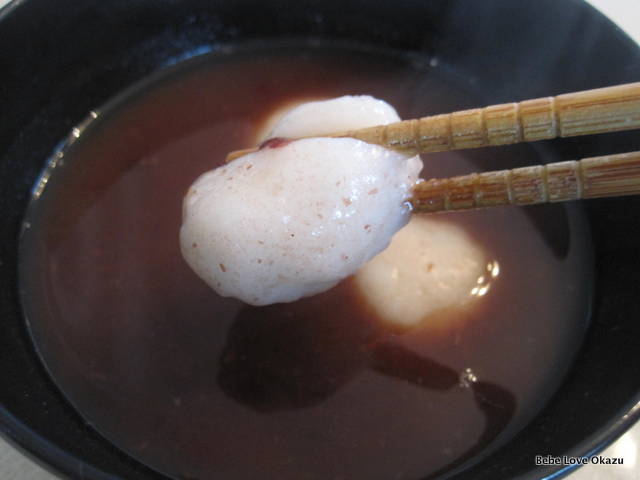
10 Comments